|
THE CROSS ON THE HORIZON
About sixty years after the Israelites’ Exodus, highly unusual
religious developments took place in Egypt. Some scholars view those
developments as an attempt to adopt Monotheism—perhaps under the
influence of the revelations at Mount Sinai. What they have in mind
is the reign of Amenhotep (sometimes rendered as Amenophis) IV who
left Thebes and its temples, gave up the worship of Amon, and
declared ATEN the sole creator god.
As we shall show, that was not an echo of Monotheism, but another
harbinger of an expected Return—the return, into view, of the Planet
of the Cross.
The Pharaoh in question is better known by the new name he had
adopted—Akhen-Aten (“The servant/worshipper of Aten”), and the new
capital and religious center that he had established, Akhet-Aten (“Aten
of the Horizon”), is better known by the site’s modern name, Tell
el-Amarna (where the famed ancient archive of royal international
correspondence was discovered).
Scion of Egypt’s famed eighteenth Dynasty, Akhenaten reigned from
1379 to 1362 b.c.e., and his religious revolution did not last. The
priesthood of Amon in Thebes led the opposition, presumably because
it was deprived of its positions of power and wealth, but it is of
course possible that the objections were genuinely on religious
grounds, for Akhenaten’s successors (of whom most famed was
Tut-Ankh-Amen) resumed the inclusion of Ra/Amon in their theophoric
names.
No sooner was Akhenaten gone than the new capital, its
temples, and its palace were torn down and systematically destroyed.
Nevertheless, the remains that archaeologists have found throw
enough light on Akhenaten and his religion.
The notion that the worship of the Aten was a form of
monotheism—worship of a sole universal creator—stems primarily from
some of the hymns to the Aten that have been found; they include
such verses as,
“O sole god, like whom there is no other
... The
world came into being by thy hand.”
The fact that, in a clear
departure from Egyptian customs, representation of this god in
anthropomorphic form was strictly forbidden sounds very much like
Yahweh’s prohibition, in the Ten Commandments, against making any
“graven images” to worship.
Additionally, some portions of the Hymns
to Aten read as if they were clones of the biblical Psalms—
O living Aten,
How manifold are thy works!
They are hidden from the sight of men.
O sole god, beside whom there is no other!
Thou didst create the earth according to thy desire
whilst thou wast alone.
The famed Egyptologist James H. Breasted (The Dawn of Conscience)
compared the above verses to Psalm 104, beginning with verse 24—
O Lord, how manifold are thy works!
In wisdom hast thou made them all;
the Earth is full of thy riches.
The similarity, however, arises not because the two, Egyptian hymn
and biblical Psalm, copy each other, but because both speak of the
same celestial god of the Sumerian Epic of Creation—of Nibiru—that
shaped the Heavens and created the Earth, imparting to it the “seed
of life.”
Virtually every book on ancient Egypt will tell you that the “Aten”
disc that Akhenaten made the central object of worship represented
the benevolent Sun. If so, it was odd that in a marked departure
from Egyptian temple architecture that oriented the temples to the
solstices on a southeast-northwest axis, Akhenaten oriented his Aten
temple on an east–west axis—but had it facing west, away from the
Sun at sunrise. If he was expecting a celestial reappearance from a
direction opposite to that of where the Sun rises, it could not be
the Sun.
A close reading of the hymns reveals that Akhenaten’s “star god” was
not Ra as Amon “the Unseen,” but a different kind of Ra: it was the
celestial god who had “existed from primeval time ... The one who
renews himself ” as it reappears in all its glory, a celestial god
that was “going afar and returning.”
On a daily basis, those words
could indeed apply to the Sun, but on a long-term basis, the
description fitted Ra only as Nibiru: it did become unseen, the
hymns said, because it was “far away in heaven,” because it went “to
the rear of the horizon, to the height of heaven.” And now,
Akhenaten announced, it was coming back in all its glory. Aten’s
hymns prophesied its reappearance, its return “beautiful on the
horizon of heaven ... Glittering, beautiful, strong,” ushering a
time of peace and benevolence to all.
These words express clear
messianic expectations that have nothing to do with the Sun.
In support of the “Aten is the Sun” explanation, various depictions
of Akhenaten are offered; they show (Fig. 68) him and his wife
blessed by, or praying to, a rayed star; it is the Sun, most
Egyptologists say. The hymns do refer to the Aten as a manifestation
of Ra, which to Egyptologists who have deemed Ra to be the Sun means
that Aten, too, represented the Sun; but if Ra was Marduk and the
celestial Marduk was Nibiru, then Aten, too, represented Nibiru and
not the Sun.
Additional evidence comes from sky maps, some painted
on coffin lids (Fig. 69), that clearly showed the twelve zodiacal
constellations, the rayed Sun, and other members of the solar
system; but the planet of Ra, the “Planet of Millions of Years,” is
shown as an extra planet in its own large separate celestial barque
beyond the Sun, with the pictorial hieroglyph for “god” in
it—Akhenaten’s “Aten.”
What, then, was Akhenaten’s innovation, or, rather, digression, from
the official religious line? At its core his “transgression” was the
same old debate that had taken place 720 years earlier about timing.
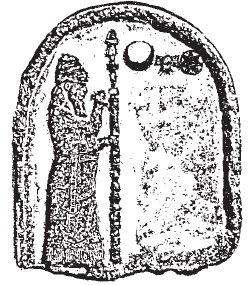
Figure 68
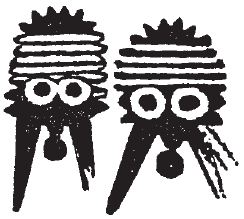
Figure 69
Then the issue was: Has Marduk/Ra’s
time for supremacy come, has the Age of the Ram begun in the
heavens?
Akhenaten shifted the issue from Celestial Time (the
zodiacal clock) to Divine Time (Nibiru’s orbital time), changing the
question to: When will the Unseen celestial god reappear and become
visible—“beautiful on the horizon of heaven”?
His greatest heresy in the eyes of the priests of Ra/Amon can be
judged by the fact that he erected a special monument honoring the
Ben-Ben—an object that had been revered generations earlier as the
vehicle in which Ra had arrived on Earth from the heavens (Fig. 70).
It was an indication, we believe, that what he was expecting in
connection with Aten was a Reappearance, a Return not just of the
Planet of the Gods, but another arrival, a New Coming of the gods
themselves!
This, we must conclude, was the innovation, the difference
introduced by Akhenaten. In defiance of the priestly establishment,
and no doubt prematurely in their opinion, he was announcing the
coming of a new messianic time.
This heresy was aggravated by the
fact that Akhenaten’s pronouncements about the returning Aten were
accompanied by a personal claim:
Akhenaten increasingly referred to
himself as the god’s prophet-son, one “who came forth from the god’s
body,” and to whom alone the deity’s plans were revealed:
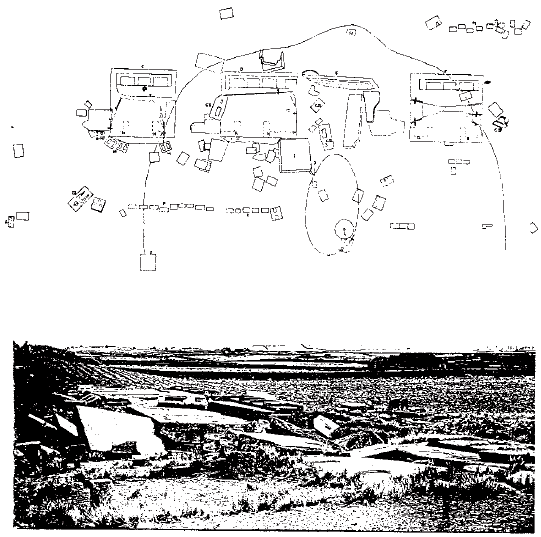
Figure 70
There is no other that knoweth thee
except thy son Akhenaten;
Thou hast made him wise in thy plans.
And this, too, was unacceptable to the Theban priests of Amon. As
soon as Akhenaten was gone (and it is uncertain how ... ), they
restored the worship of Amon—the Unseen god—and smashed and
destroyed all that Akhenaten had erected.
That the Aten episode in Egypt, as the introduction of the
Jubilee—the “Year of the Ram”—were the stirrings of a wider
expectation of a Return of a celestial “star god” is evident from
yet another biblical reference to the Ram, yet another manifestation
of a Countdown to the Return.
It is the record of an unusual incident at the end of the Exodus. It
is a tale that is replete with puzzling aspects, and one that ends
with a divinely inspired vision of things to come.
The Bible repeatedly declared divination by examining animal
entrails, consulting with spirits, soothsaying, enchanting,
conjuring, and fortune-telling to be “abominations unto Yahweh”—all
manners of sorcery practiced by other nations that the Israelites
must avoid. At the same time, it asserted—quoting Yahweh
himself—that dreams, oracles, and visions could be legitimate ways
of divine communication. It is such a distinction that explains why
the Book of Numbers devotes three long chapters (22–24) to
tell—approvingly!— the story of a non-Israelite Seer and
Oracle-teller.
His name was Bil’am, rendered Balaam in English
Bibles.
The events described in those chapters took place when the
Israelites (“Children of Israel” in the Bible), having left the
Sinai Peninsula, went around the Dead Sea on the east, advancing
northward. As they encountered the small kingdoms that occupied the
lands east of the Dead Sea and the Jordan River, Moses sought from
their kings permission for peaceful passage; it was, by and large,
refused. The Israelites, having just defeated the Ammonites, who did
not let them pass through peacefully, now “were encamped in the
plains of Mo’ab, on the side of the Jordan that is opposite
Jericho,” awaiting the Moabite king’s permission to pass through his
land.
Unwilling to let “the horde” pass yet afraid to fight them, the king
of Mo’ab—Balak the son of Zippor—had a bright idea. He sent
emissaries to fetch an internationally renowned seer, Bala’am the
son of Be’or, and have him “put a curse on these people for me,” to
make it possible to defeat and chase them away.
Balaam had to be entreated several times before he accepted the
assignment. First at Balaam’s home (somewhere near the Euphrates
River?) and then on the way to Moab, an Angel of God (the word in
Hebrew, Mal’ach, literally means “emissary”) appears and gets
involved in the proceedings; he is sometimes visible and sometimes
invisible. The Angel allows Balaam to accept the assignment only
after making sure that Balaam understands that he is to utter only
divinely inspired omens.
Puzzlingly, Balaam calls
Yahweh “my God”
when he repeats this condition, first to the king’s ambassadors and
then to the Moabite king himself.
A series of oracular settings are then arranged. The king takes
Balaam to a hilltop from which he can see the whole Israelite
encampment, and on the Seer’s instructions he erects seven altars,
sacrifices seven bullocks and seven rams, and awaits the oracle; but
from Balaam’s mouth come words not of accusation but of praise for
the Israelites.
The persistent Moabite king then takes Balaam to another mount, from
which just the edge of the Israelite encampment can be seen, and the
procedure is repeated a seond time. But again Balaam’s oracle
blesses rather than curses the Israelites: I see them coming out of
Egypt protected by a god with spreading ram’s horns, he says—it is a
nation destined for kingship, a nation that like a lion will arise.
Determined to try again, the king now takes Balaam to a hilltop that
faces the desert, facing away from the Israelite encampment; “maybe
the gods will let you proclaim curses there,” he says. Seven altars
are again erected, on which seven bullocks and seven rams are
sacrificed. But Balaam now sees the Israelites and their future not
with human eyes but “in a divine vision.” For the second time he
sees the nation protected, as it came out of Egypt, by a god with
spreading rams’ horns, and envisions Israel as a nation that “like a
lion will arise.”
When the Moabite king protests, Balaam explains that no matter what
gold or silver he be offered, he can utter only the words that God
puts in his mouth. So the frustrated king gives up and lets Balaam
go.
But now Balaam offers the king free advice:
Let me tell you what
the future holds, he says to the king—“that which will come about to
this nation and to your people at the end of days”—and proceeds to
describe the divine vision of the future by relating it to a “star”:
I see it, though not now;
I behold it, though it is not near:
A Star of Jacob is on its course.
A Scepter from Israel will arise—
Moab’s quarters it will crush,
all the Children of Seth it will unsettle.
Numbers 24: 17
Balaam then turned and cast his eyes toward the Edomites,
Amalekites, Kenites, and other Canaanite nations, and pronounced an
oracle thereon: Those who will survive the wrath of Jacob shall fall
into the hands of Assyria; then Assyria’s turn will come, and it
shall forever perish.
And having pronounced that oracle,
“Balaam
rose up and went back to his place; and Balak too went on his way.”
Though the Balaam episode has naturally been the subject of
discussion and debate by biblical and theological scholars, it
remains baffling and unresolved. The text switches effortlessly
between references to the Elohim—“gods” in the plural—and to Yahweh,
the sole God, as the Divine Presence.
It gravely transgresses the
Bible’s most basic prohibition by applying to the God who brought
the Israelites out of Egypt a physical image, and then compounds the
transgression by envisioning Him in the image of “a ram with
spreading horns”—an image that has been the Egyptian depiction of Amon
(Fig. 71)!
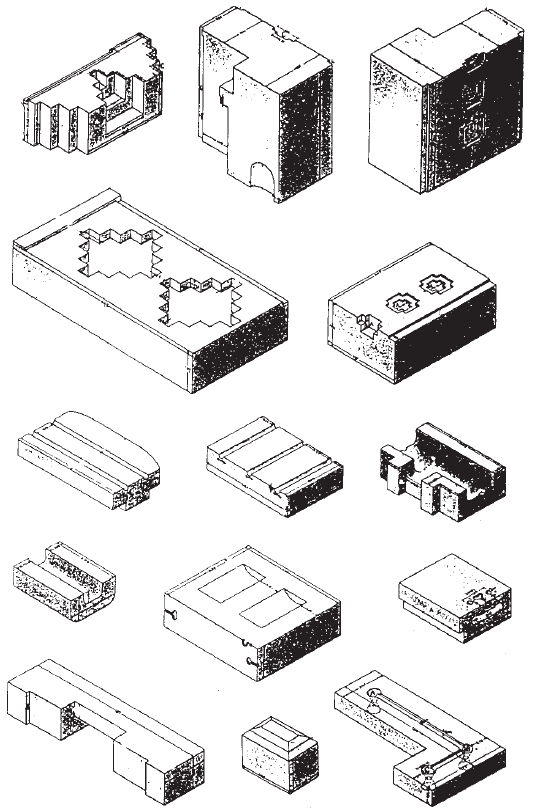
Figure 71
The approving attitude toward a professional seer in a Bible that prohibited soothsaying, conjuring, and
so on adds to the feeling that the whole tale was, originally, a
non-Israelite tale, and yet the Bible incorporated it, devoting to
it substantial space, so the incident and its message must have been
considered a significant prelude to the Israelite possession of the
Promised Land.
The text suggests that Balaam was an Aramaean, residing somewhere up
the Euphrates River; his prophetic oracles expanded from the fate of
the Children of Jacob to the place of Israel among the nations to
oracles regarding the future of such other nations—even of distant
and yet-to-come imperial Assyria. The oracles were thus an
expression of wider non-Israelite expectations at the time. By
including the tale, the Bible combined the Israelite destiny with
Mankind’s universal expectations.
Those expectations, the Balaam tale indicates, were channeled along
two paths—the zodiacal cycle on the one hand, and the Returning
Star’s course on the other hand.
The zodiacal references are strongest regarding the Age of the Ram
(and its god!) at the time of the Exodus, and become oracular and
prophetic as the Seer Balaam envisions the Future, when the zodiacal
constellation symbols of the Bull and the Ram (“bullocks and rams
for sevenfold sacrifices”) and the Lion (“when the Royal Trumpet
shall be heard in Israel”) are invoked (Numbers Chapter 23). And it
is when envisioning that Distant Future that the Balaam text employs
the significant term At the End of Days as the time to which the
prophetic oracles apply (Numbers 24: 14).
The term directly links these non-Israelite prophecies to the
destiny of Jacob’s offspring because it was used by Jacob himself as
he lay on his deathbed and gathered his children to hear oracles
regarding their future (Genesis Chapter 49). “Come gather together,”
he said, “that I may tell you that which shall befall you at the End
of Days.” The oracles, individually stated for each one of the
twelve future Tribes of Israel, are deemed by many to be related to
the twelve zodiacal constellations.
And what about the Star of Jacob—an explicit vision by Balaam?
In scholarly biblical discussions, it is usually considered in an
astrological rather than an astronomical context at best, and more
often than not, the tendency has been to deem the reference to
“Jacob’s Star” as purely figurative. But what if the reference was
indeed to a “star” orbiting on its course—a planet prophetically
seen though it is not yet visible?
What if Balaam, like Akhenaten, was speaking of the return, the
reappearance, of
Nibiru?
Such a return, it must be realized, would
be an extraordinary event that occurs once in several millennia, an
event that had repeatedly signified the most profound watersheds in
the affairs of gods and men.
This is not just a rhetorical question. In fact, the unfolding
events were increasingly indicating that an overwhelmingly
significant occurrence was in the offing. Within a century or so of
the preoccupations and predictions regarding the Returning Planet
that we find in the tales of the Exodus, Balaam, and Akhenaten’s
Egypt, Babylon itself started to provide evidence of such
wide-spreading expectations, and the most prominent clue was the
Sign of the Cross.
In Babylon, the time was that of the Kassite dynasty, of which we
have written earlier. Little has remained of their reign in Babylon
itself, and as stated earlier those kings did not excel in keeping
royal records. But they did leave behind telltale depictions—and
international correspondence of letters on clay tablets.
It was in the ruins of Akhet-Aten, Akhenaten’s capital—a site now
known as Tell el-Amarna in Egypt—that the famed “el-Amarna Tablets”
were discovered. Of the 380 clay tablets, all except three were
inscribed in the Akkadian language, which was then the language of
international diplomacy. While some of the tablets represented
copies of royal letters sent from the Egyptian court, the bulk were
original letters received from foreign kings.
The cache was the royal diplomatic archive of Akhenaten, and the
tablets were predominantly correspondence he had received from the
kings of Babylon!
Did Akhenaten use those exchanges of letters with his counterparts
in Babylon to tell them of his newfound Aten religion?
We really
don’t know, for all we have are a Babylonian king’s letters to Akhenaten in which he complained that gold sent to him was found
short in weight, that his ambassadors were robbed on the way to
Egypt, or that the Egyptian king failed to inquire about his health.
Yet the frequent exchanges of ambassadors and other emissaries, even
offers of intermarriage, as well as the calling of the Egyptian king
“my brother” by the Babylonian king, must lead to a conclusion that
the hierarchy in Babylon was fully aware of the religious goings-on
in Egypt; and if Babylon wondered, “What is this ‘Ra as a Returning
Star’ commotion?” Babylon must have realized that it was a reference
to “Marduk as a Returning Planet”—to Nibiru orbiting back.
With the tradition of celestial observations so much older and more
advanced in Mesopotamia than in Egypt, it is of course possible that
the royal astronomers of Babylon had come to conclusions regarding
Nibiru’s return without Egyptian aid, and even ahead of the
Egyptians. Be that as it may, it was in the thirteenth century
b.c.e. that the Kassite kings of Babylon started to signal, in a
variety of ways, their own fundamental religious changes.
In 1260 b.c.e. a new king ascended the throne in Babylon and adopted
the name Kadashman-Enlil—a theophoric name surprisingly venerating
Enlil. It was no passing gesture, for he was followed on the throne,
for the next century, by Kassite kings bearing theophoric names
venerating not only Enlil but also Adad—a surprising gesture
suggesting a desire for divine reconciliation.
That something
unusual was expected was further evidenced on commemorative
monuments called kudurru—“rounded stones”—that were set up as
boundary markers. Inscribed with a text stating the terms of the
border treaty (or land grant) and the oaths taken to uphold it, the
kudurru was sanctified by symbols of the celestial gods. The divine
zodiacal symbols—all twelve of them—were frequently depicted (Fig.
72); orbiting above them were the emblems of the Sun, the Moon, and
Nibiru. In another depiction (Fig. 73), Nibiru was shown in the
company of Earth (the seventh planet) and the Moon (and the
umbilical-cutter symbol for Ninmah).
Significantly, Nibiru was depicted no longer by the Winged Disc
symbol, but rather in a new way—as the planet of the radiating
cross—befitting its description by the Sumerians in the “Olden Days”
as a radiating planet about to become the “Planet of the Crossing.”
This way of showing a long-unobserved Nibiru by a symbol of a
radiating cross began to become more common, and soon the Kassite
kings of Babylon simplified the symbol to just a Sign of the Cross,
replacing with it the Winged Disc symbol on their royal seals (Fig.
74). This cross symbol, which looks like the much later Christian
“Maltese Cross,” is known in studies of ancient glyptic as a
“Kassite Cross.”
As another depiction indicates, the symbol of the
cross was for a planet clearly not the same as the Sun, which is
separately shown along with the Moon-crescent and the six-pointed
star
symbol for Mars (Fig. 75).

Figure 72

Figure 73
As the first millennium b.c.e. began, Nibiru’s Sign of the Cross
spread from Babylonia to seal designs in nearby lands. In the
absence of Kassite religious or literary texts, it is a matter of
conjecture what messianic expectations might have accompanied these
changes in depictions.

Figure 74
Whatever they were, they
intensified the ferocity of the attacks by the Enlilite
states—Assyria, Elam—on Babylon and their opposition to Marduk’s
hegemony. Those attacks delayed, but did not prevent, the eventual
adoption of the Sign of the Cross in Assyria itself. As royal
monuments reveal, it was worn, most conspicuously, by Assyria’s
kings on their chests, near their hearts (Fig. 76)—the way devout
Catholics wear the cross nowadays.

Figure 75
Religiously and astronomically, it was a most significant gesture.
That it was also a widespread manifestation is suggested by the fact
that in Egypt, too, depictions were found of a king-god wearing,
like his Assyrian counterparts, the sign of the cross on his chest
(Fig. 77).

Figure 76
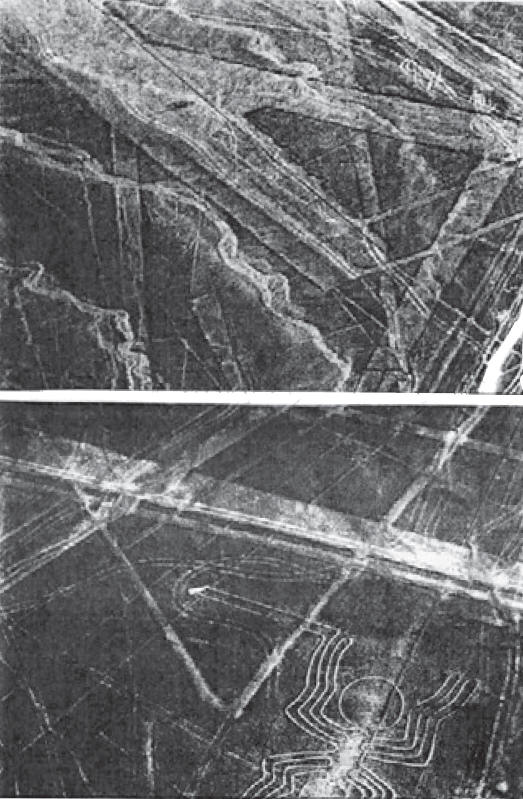
Figure 77
The adoption of the Sign of the Cross as the emblem of Nibiru, in
Babylon, Assyria, and elsewhere, was not a surprising innovation.
The sign had been used before—by the Sumerians and Akkadians.
“Nibiru—let ‘Crossing’ be its name!” the Epic of Creation stated;
and accordingly its symbol, the cross, had been employed in Sumerian
glyptic to denote Nibiru, but
then it always signified its Return into visibility.
Enuma elish, the Epic of Creation, clearly stated that after the
Celestial Battle with Tiamat, the Invader made a grand orbit around
the Sun and returned to the scene of the battle. Since Tiamat
orbited the Sun in a plane called the Ecliptic (as other members of
our Sun’s planetary family do), it is to that place in the heavens
that the Invader had to return; and when it does so, orbit after
orbit after orbit, it is there that it crosses the plane of the
ecliptic.
A simple way to illustrate this would be to show the
orbital path of the well-known Halley’s Comet (Fig. 78), which
emulates on a greatly reduced scale the orbit of Nibiru: its
inclined orbit brings it, as it nears the Sun, from the south, from
below the ecliptic, near Uranus.
It arches above the ecliptic and
makes the turn around the Sun, saying “Hello” to Saturn, Jupiter,
and Mars; then it comes down and crosses the ecliptic near the site
of Nibiru’s Celestial Battle with Tiamat—the Crossing (marked
“X”)—and is gone, only to come back as its orbital Destiny
prescribes.

Figure 78
That point, in the heavens and in time, is The Crossing— it is then,
Enuma elish stated, that the planet of the Anunnaki becomes the
Planet of the Cross:
Planet NIBIRU:
The Crossroads of Heaven and Earth
it shall occupy ...
Planet NIBIRU:
The central
position he holds ...
Planet NIBIRU:
It is he who without tiring
the midst of Tiamat keeps crossing;
Let “Crossing” be his name!
Sumerian texts dealing with landmark events in Mankind’s saga
provide specific indications regarding the periodic appearances of
the Planet of the Anunnaki—approximately every 3,600 years—and
always at crucial junctions in Earth’s and Mankind’s history. It was
at such times that the planet was called Nibiru, and its glyptical
depictions—even in early Sumerian times—were the Cross.
That record began with the Deluge. Several texts dealing with the
Deluge associated the watershed catastrophe with the appearance of
the celestial god, Nibiru, in the Age of the Lion (circa 10,900
b.c.e.)—it was “the constellation of the Lion that measured the
waters of the deep,” one text said.
Other texts described the
appearance of Nibiru at Deluge time as a radiating star, and
depicted it accordingly (Fig. 79)—

Figure 79
When they shall call out “Flooding!”
It is the god Nibiru
...
Lord whose shining crown with terror is laden;
Daily within the Lion he is afire.
The planet returned, reappeared, and again became “Nibiru” when
Mankind was granted farming and husbandry, in the mid-eighth
millennium b.c.e.; depictions (on cylinder seals) illustrating the
beginning of agriculture used the Sign of the Cross to show Nibiru
visible in Earth’s skies (Fig. 80).

Figure 80
Finally and most memorably for the Sumerians, the planet was visible
once again when Anu and Antu came to Earth on a state visit circa
4000 b.c.e., in the Age of the Bull (Taurus). The city that was
later known for millennia as Uruk was established in their honor, a
ziggurat was erected, and from its stages the appearance of the
planets on the horizon, as the night sky darkened, was observed.
When Nibiru came into view, a shout went up:
“The Creator’s image
has arisen!” and all present broke into hymnal songs of praise for
“the planet of the Lord Anu.”
Nibiru’s appearance at the start of the Age of the Bull meant that
at the time of heliacal rising—when dawn begins but the horizon is
still dark enough to see the stars—the constellation in the
background was that of Taurus. But the fast-moving Nibiru, arcing in
the skies as it circled the Sun, soon descended back to cut across
the planetary plain (“ecliptic”) to the point of Crossing. There the
crossing was observed against the background of the constellation of
the Lion.
Several depictions, on cylinder seals and in astronomical
tablets, used the cross symbol to indicate Nibiru’s arrival when
Earth was in the Age of the Bull and its crossing was observed in
the constellation of the Lion (cylinder seal depiction, Fig. 81, and
as illustrated in Fig. 82).
The change from the Winged Disc symbol to the Sign of the Cross thus
was not an innovation; it was reverting to the
way in which the Celestial Lord had been depicted in earlier
times—but only when in its great orbit it crossed the ecliptic and
became “Nibiru.”

Figure 81

Figure 82
As in the past, the renewed display of the Sign of the Cross
signified reappearance, coming back into view, RETURN.
Back to Contents
|














